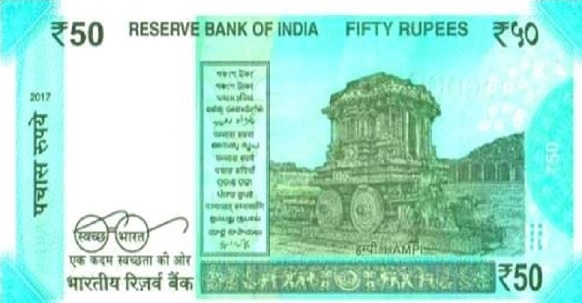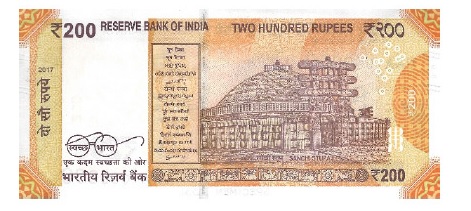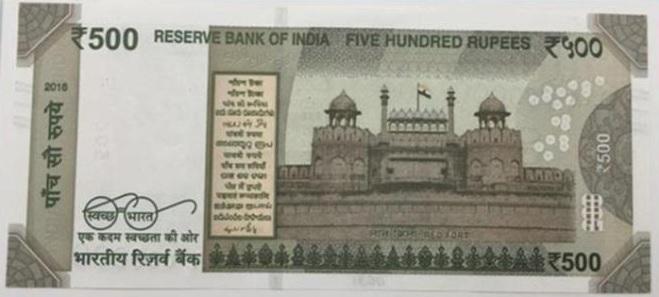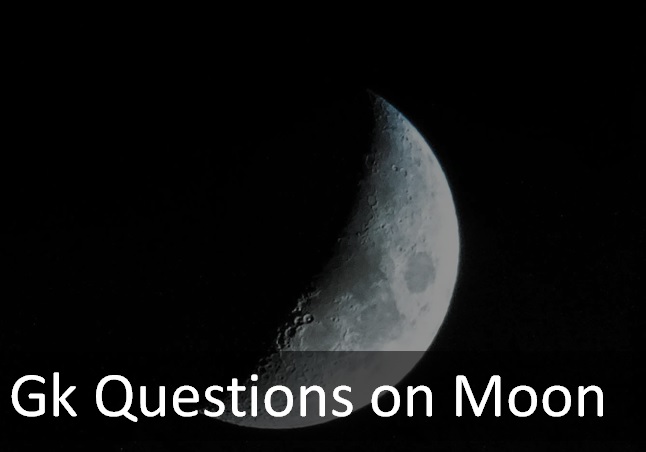Historical monuments printed on Indian Currency: Know what historical monuments are printed on the backside of Indian Currency Notes

If we look into history we will find that currencies (both coins and notes) are used by countries not only for transactions but also for showcasing their cultural heritage. The currency of India i.e. Rupee is available in different denominations. We use both coins as well as paper notes. Indian currency notes are famous and widely acclaimed for their magnificent architectural images. The reason why RBI Printed Historical monuments on Indian currency is to display the cultural diversity and proud achievements of India.
The tradition or culture or printing such monuments on Notes started when Rs. 1 note was released with proud images of World War 1. Apart from monuments, historical achievements are also printed on the notes. For example – The note of Rupees 2000/- depicts Mangalyaan i.e Mars Mission of India.
Questions from Historical Monument Printed on Indian Currencies are often asked in competitive examinations including SSC, UPSC, Railways, Banking, etc. In today’s post, we are going to share complete details related to all images printed on Indian Currency Notes.
Top Historical Monuments and Image printed on Indian Currency Notes
Have a look at Historical monuments printed on the backside of Indian Currency:
1. Sun Temple, Konark – 10 Rupees Note

- State – Odisha
- Size – 10.62 hector (26.2 acres)
- Completed – In the year 1250
- 10 rupee note backside image name: Konark Sun temple
The RBI introduced new series of 10 Rupees currency notes on 5th January 2018. This new series of notes has an image of the Konark Sun temple on the back side. On the front side, it shows the picture of Mahatama Gandhi just like the notes of older series.
Built in the 13th century (around the year 1250), the Sun temple is located on the coastline of Odisha, India. As far as the style of this temple is concerned it follows the traditional style of Kalinga Architecture. The orientation of the temple is towards the East. Due to this reason, the first ray of the sunrise enters the main entrance.
According to the accounts of European sailors, this temple was also called the “Black Pagoda”. Sun Temple, Konark was declared a UNESCO world heritage site in 1984. Due to its cultural importance, it was depicted on 10 rupees notes. Please note that the Konark Temple that we see today is restored by archaeological teams.
Check: Important GK questions
2. Ellora Caves, Aurangabad – 20 Rupees Note

- Type of Caves – Monolithic
- Designated at UNESCO world heritage site – In 1984
- Overview – Recently, the note of rupees 20 is also changed by the RBI. The newly introduced note has florescent green colour. Earlier, this note was of pinkish colour with an image of beaches from Port Blair. Now, the note of 20 rupees has Ellora caves printed on this backside. The site of Ellora caves is located in the Aurangabad district of Maharashtra, India.
These amazing Hindu caves were built during the Kalachuris period. Please note that many Buddhist and Jain caves are also present on this site. We are calling them Hindu caves because the Hindu caves present here are the oldest. This new note as Rs. 20 currency was introduced in April 2019.
3. Stone Chariot of Hampi, Karnataka – 50 Rupees Note

- Area – 4,187.24 hactare
- Exact Location – Vijayanagara district in Karnataka, India
- Overview – The new blue colour note of Rs. 50 looks very beautiful. It was released on 18 August 2017. Earlier, the 50 Rs. Note in India used to depict the Parliament of India. Now, the new note has an image of the Stone Chariot of Hampi, Karnataka. This “Stone Chariot” is a shrine dedicated to “Garuda”. Please note that Garuda is the vehicle of Lord “Vishnu”.
Stone Chariot of Hampi is one of the three iconic stone chariots in India. The other two chariots are in Konark (Odisha) and Mahabalipuram (Tamil Nadu). This chariot was built in the 16th Century by King Krishnadevaraya who was the ruler of Vijayanagara Empire.
4. Rani Ki Vav, Gujarat – 100 Rupees Note

- Exact Location – Patan, Gujarat
- Type of Architecture – Stepwell
- Overview – Rani ki Vav is basically a stepwell in the Patan district of Gujarat. The construction of this stepwell is attributed to Udayamati (she was the daughter of Khengara of Saurashtra spouse of King Bhima I). This stepwell replaces the mountain of Kanchenjunga printed on the old notes of Rs. 100.
This is one of the best and largest temples of its kind. It is believed that the queen constructed this temple and dedicate the same to the memory of her husband. There is a large number of Gauri and Parvati sculptures present in this temple. Apart from Gauri and Parvati, there are more than 700 other sculptures present here. This monument was added to the list of the UNESCO World Heritage Site in 2014.
5. Sanchi Stupa, Madhya Pradesh – 200 Rupees Note

- Exact Location – Sanchi Town, Madhya Pradesh
- Added in the list of UNESCO world Heritage Site – 1989
- Overview – Earlier, there was no 200 rupees note in India. This orange-colored currency note was added in August 2017 just after demonetization took place in India. The backside of the note has an image of Sanchi Stupa. These stupas were constructed by Mauryan Emperor Ashoka the Great. It is one of the most important buildings dedicated to Buddhism in India. The stupas are built beautifully on a hilltop at Sanchi Town. Sanchi is a very important town in itself. Apart from the stupa, the Ashoka Pillar is also present in this city. The national emblem of India is taken from the Sanchi Stupa.
6. Red Fort, Delhi – 500 Rupees Note

- Exact Location – Old Delhi, India
- Added in the list of UNESCO World Heritage Sites – In 2007
- Overview – The 500 rupees note in India also goes through some major changes after demonetization took place. After the announcement of Prime Minister Narendra Modi, the older notes were rolled back. The new currency notes were introduced with a picture of the Red Fort at the backside. The Red fort or Lal Qila is a historic building in the Old Delhi area. Every year, the prime minister of India hoists tricolor at this Fort. This fort was designated a UNESCO World Heritage Site in the year 2007.
Check Modern Indian History GK
7. Mangalyaan – 2000 Rupees Note

- Type of the mission – Mars orbiter
- Mission Launched by – Indian Space Research Organization (ISRO)
- 2000 rupee note backside image name: Mangalyaan
- Overview – The note of Rs. 2000/- is the biggest denomination of Indian Rupees. The note was introduced once Rs. 1000 note was taken back by the government. If you look at the backside of this note. You will find that it has a motif of the Mangalyaan. This motif represents India’s first interplanetary space mission launched by ISRO in the year 2013.
All and all, we can say the images printed on the back of India’s currency notes represent our pride. What do you think of India’s currency note do let us know in the comment section below. Your feedback and suggestions are also welcome.


